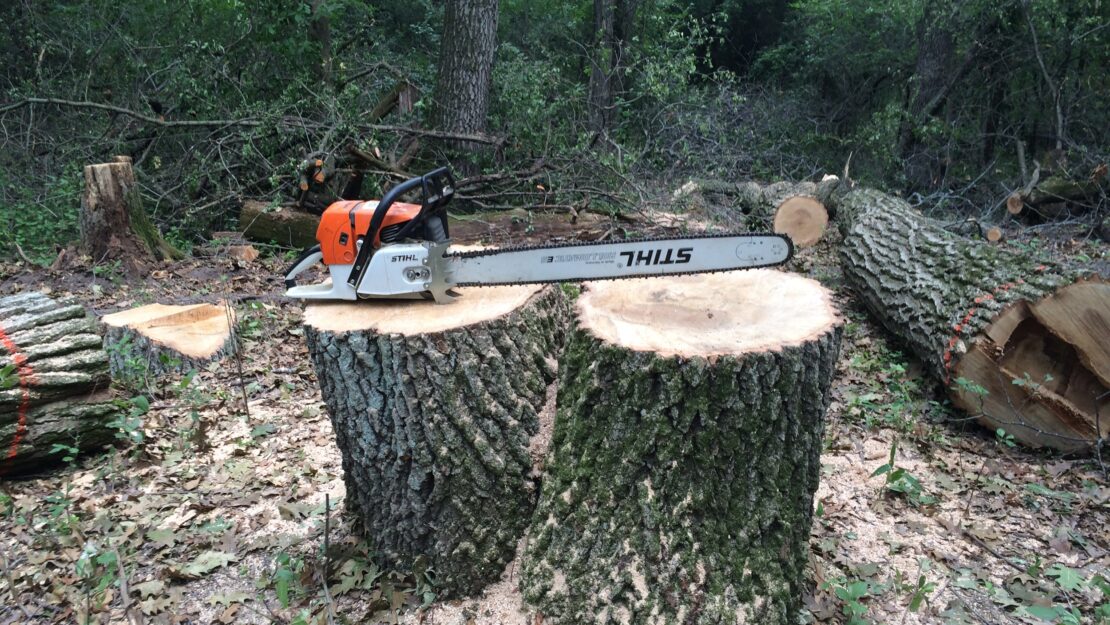So other oaks may live


(L) Preparing to plow by removing buckthorn.
(R) A golden and slightly barren crown are key symptoms of oak wilt.
By: Angela Mohar
Most people these days have heard of Dutch elm disease or of the emerald ash borer infecting and killing numerous elm and ash trees. These trees are not alone; oak trees have their own disease to which they are all susceptible simply called “oak wilt.” Oak wilt is a very aggressive fungal disease that can kill an oak within two or three months of infection. It can be spread by beetles that carry the fungus to the wounds of healthy trees or, most commonly, through root grafts.
With all of the ways that the disease can be transmitted, it can seem like there’s no hope but to let nature just take its course. Actually, there is hope. Since the 1970s, the Three Rivers Park District has had and oak wilt control program in place to isolate the disease and prevent its spread. For many years, this is where Corps members get to do some serious chainsaw work. We’re talking work that involves saws bigger and more powerful than ones we’ve ever used before and lots of careful preparation for taking down dead trees that could have been seedlings during the Civil War (several trees at least were around for both World Wars). That’s a big tree. As always, we’re up for the challenge.
For almost two months now, the Three Rivers crews have made lengthy drive down to Murphy-Hanrehan Park Reserve to do lots of strenuous work. Before we can begin removing the trees (also known as “sanitizing”), specific lines in the forest must be prepared for a crawler equipped with a five-foot blade on the back to go through and cut the roots of the trees to prevent the disease’s spread. The next part, of course, is the most fun. A little confidence and finesse, and you have a tree falling right where you want it. I don’t think I can really put it to words, but the video above explains it.

Tree with oak wilt before photo.
So why can’t we just let this fungus do what it does and let nature sort itself out? The answer is simple: oak trees are highly desirable in a park especially where it is a dominant tree species. If the parks were to lose all of the oak trees, species like buckthorn would be even worse. We have to implement control measures for the population rather than just one tree. By taking out fifty trees that are infected and dead, we save possibly ten times that many for at least another year. Since the 1970s, infection sites have gone down in the park district. There were about 60 last year at Murphy. This year, infection sites were somewhere in the 40s. How it will be next year, who knows? Right now, however, it sounds very promising and like we’re really making a difference.
For more detailed information, visit U of MN Extention or the Minnesota DNR websites:

Tree with oak wilt after photo.